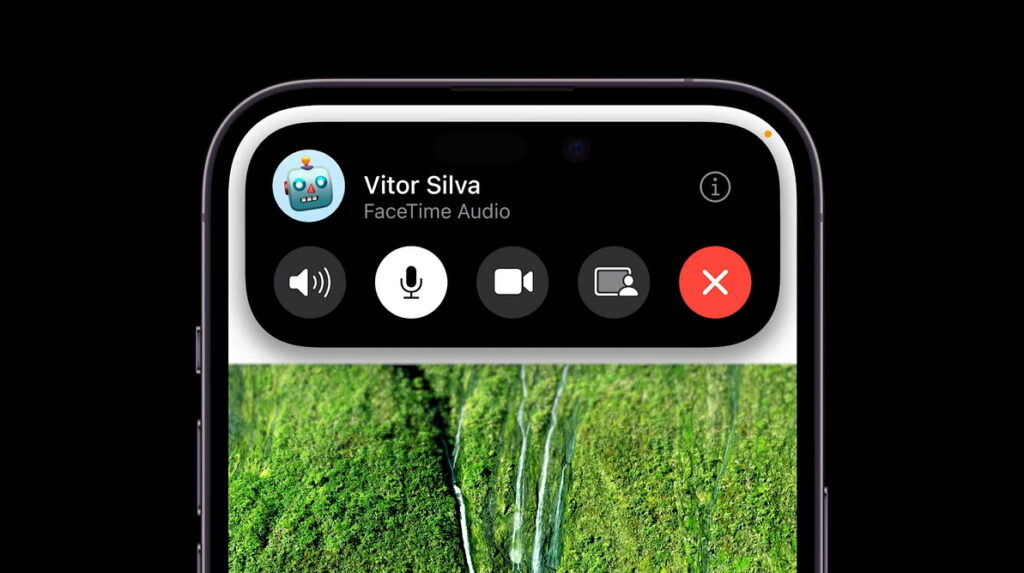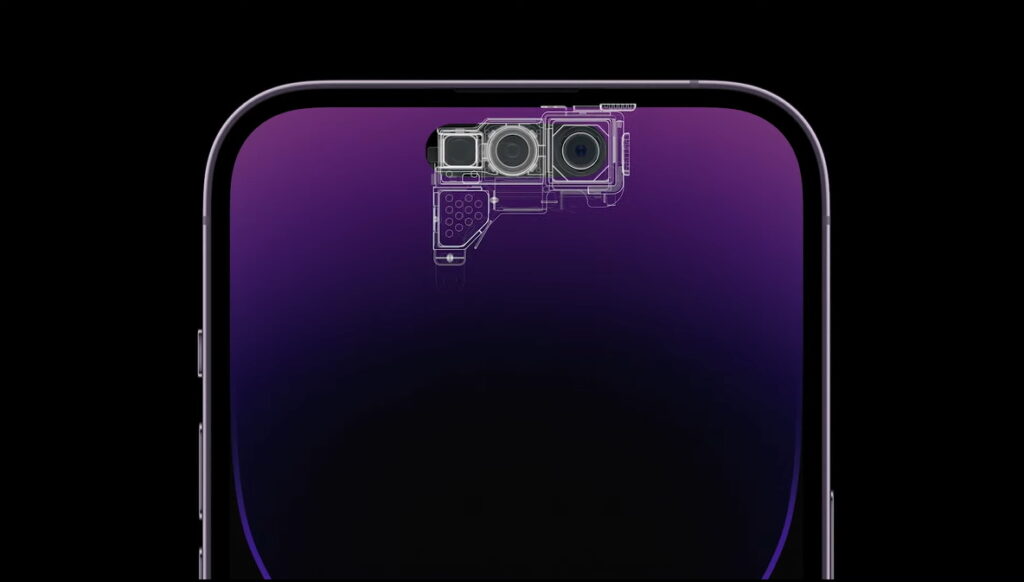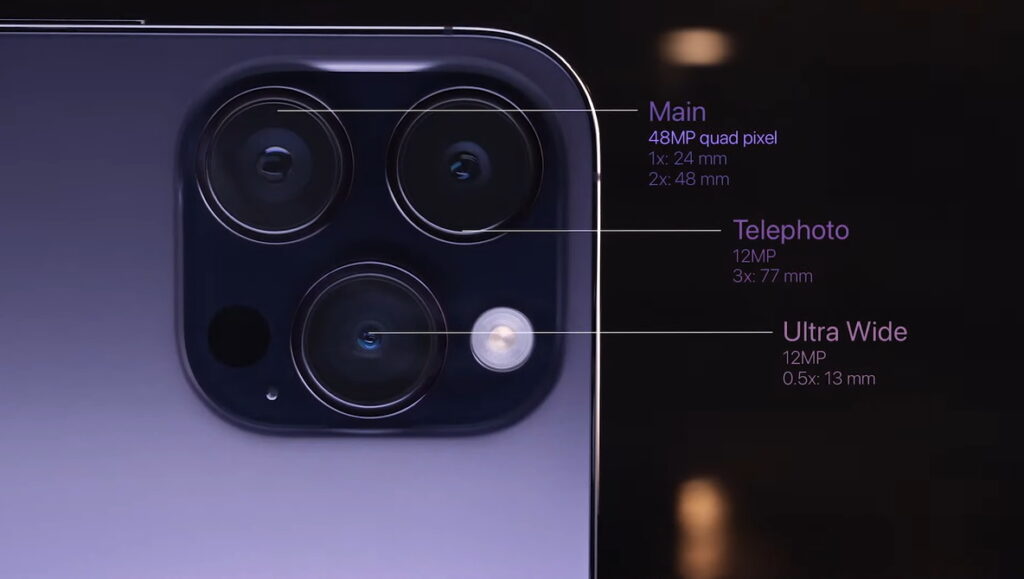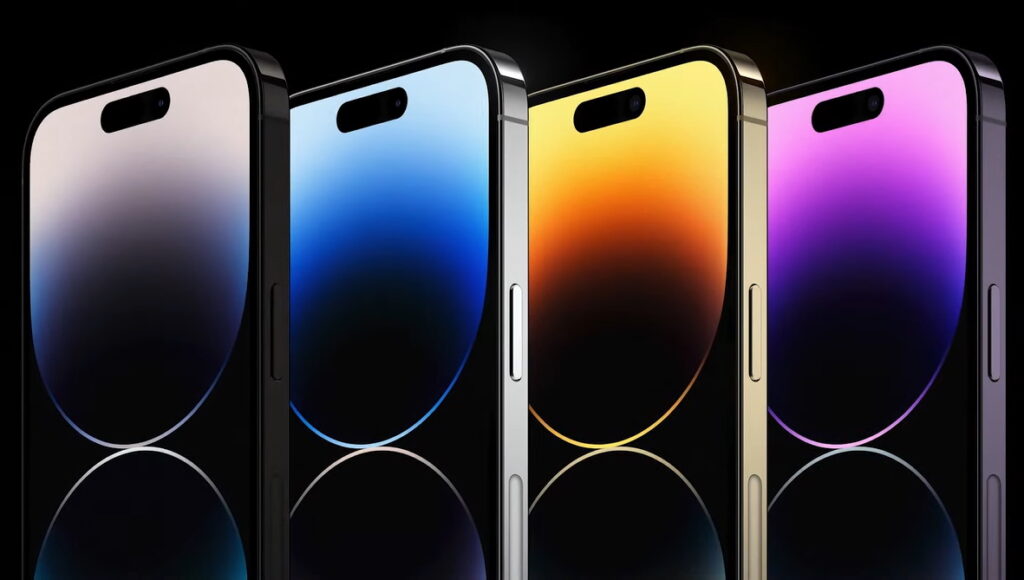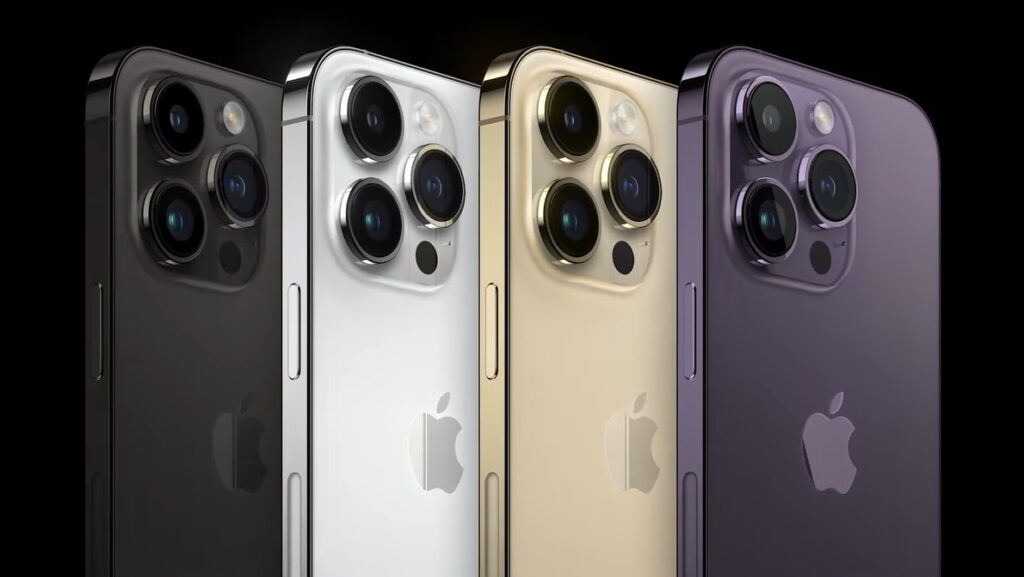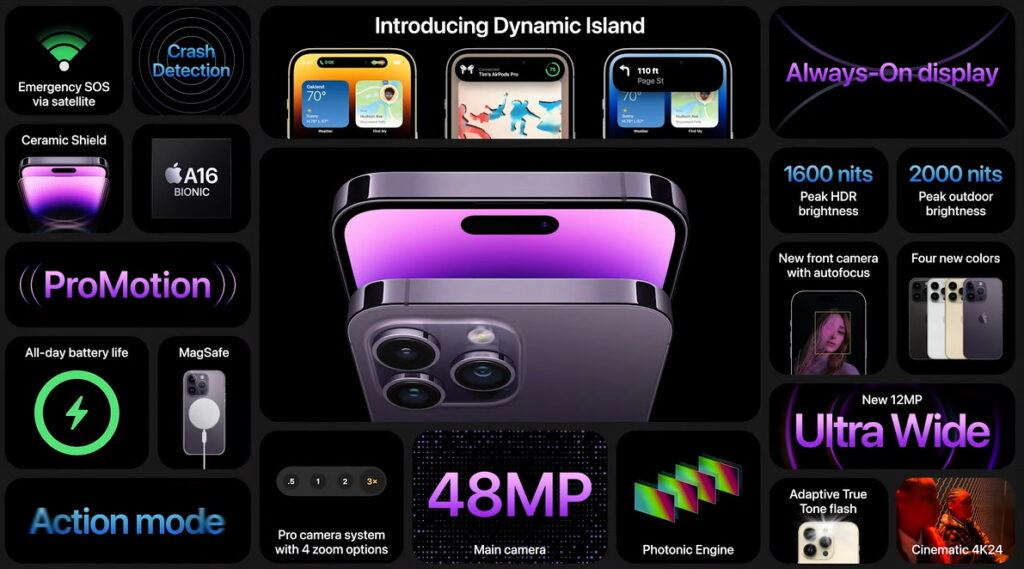For starters, there is the new notch design which is really different from previous models. However, what made it really interesting is the new user experience that Apple has implemented for it which is called Dynamic Island. Dynamic Island in action. [Image: Apple.] Whenever users receive an alert, notification, or phone call, the Dynamic Island box will expand and take over the notch’s area. The same goes for plenty of other activities such as music playback, Face ID detection, battery charging status, clock timer, and even live scores from a sports event. In many ways, Dynamic Island seems like a good way to mask the notch. Meanwhile, there is a TrueDepth camera system that is being housed inside the notch which features a 12MP sensor with an f/1.9 six-element lens and improved Cinematic Mode video shooting capability with up to 4K HDR at 30 fps. The TrueDepth camera system on iPhone 14 Pro and Pro Max. [Image: Apple.]As for the rear camera module on the iPhone 14 Pro and 14 Pro Max, it comes with a 48MP f/1.78 quad-pixel main camera alongside a 12MP f/2.2 ultra-wide camera and a 12MP f/2.8 telephoto camera with 3x optical zoom. Interesting enough, Apple has utilized the middle section of the 48MP sensor to deliver 2x optical zoom at 12MP resolution without resorting to digital zoom. Video-wise, the iPhone 14 Pro and 14 Pro Max now have Action Mode which provides gimbal-like stabilization while the Cinematic Mode now supports up to 4K HDR at 30 fps. Apple has also introduced Photonic Engine into both devices which apparently helped boost the mid- to low-light performance on all of their cameras by implementing Deep Fusion at an earlier stage during the imaging process. The rear camera module for iPhone 14 Pro and Pro Max. [Image: Apple.]The launch of iPhone 14 Pro Series devices also marked the arrival of the Always-On Display feature into the iPhone family. This was made possible by the implementation of LTPO technology that allows the refresh rate of their new Super Retina XDR OLED display with ProMotion adaptive refresh rates to go as low as 1Hz. Apple also noted that the screen on both devices is much brighter this time around with outdoor peak brightness of 2000 nits. When it comes to the screen size, they remained identical to their predecessors as the iPhone 14 Pro and 14 Pro Max continue to feature 6.1- and 6.7-inch displays, respectively which are also continued to be protected by Ceramic Shield. The three colourways of iPhone 14 Pro Series: Space Black, Silver, Gold, and Deep Purple [Image: Apple.][Image: Apple.]As opposed to the iPhone 14 and 14 Plus which were equipped with last year’s A15 Bionic, the Pro and Pro Max variants were installed with the new A16 Bionic chip. Built using 4nm manufacturing technology, Apple claimed that 6-core CPU inside the processor is up to 40% faster than the competition while the chip also contained a 5-core GPU and 16-core Neural Engine. Stainless steel remains Apple’s material of choice to build the chassis for both devices. The same goes for their battery life which is rated at up to 29 hours for video playback. A summary of features within iPhone 14 Pro and Pro Max. [Image: Apple.]Malaysian consumers are able to pre-order both devices on 16 September and they will begin to receive their orders starting from 23 September onwards. Here is the price list, according to Apple Malaysia’s website:
iPhone 14 Pro / Pro Max 128GB: RM5,299 / RM5,799iPhone 14 Pro / Pro Max 256GB: RM5,799 / RM6,299iPhone 14 Pro / Pro Max 512GB: RM6,799 / RM7,299iPhone 14 Pro / Pro Max 1TB: RM7,799 / RM8,299
With that, you are looking at a difference of between RM400 to RM700 when compared to the launch price of the iPhone 13 Pro and 13 Pro Max last year. By the way, you may want to consider adding the price of a USB-C charger into your budget since Apple does not provide a charger for the phone.
